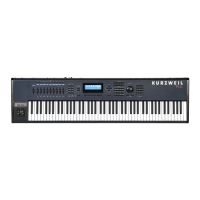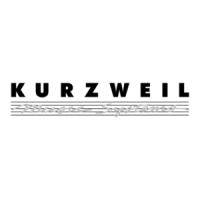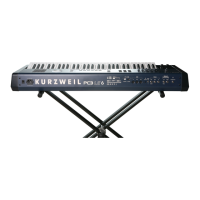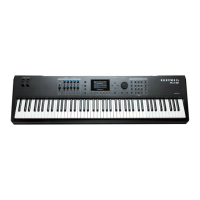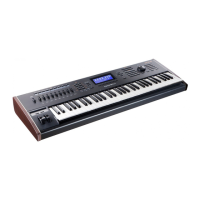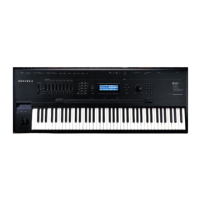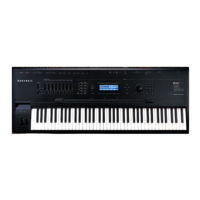Effects
Equalizers (EQ)
9-13
Diff Amt adjusts the diffuser intensity. Range is 0 to 100%.
C Fdbk n Dly adjusts the delay length of the C channel’s nth feedback tap, fed back to the C
channel’s delay input. Range is 0 to 2600 ms.
Spectral Multitap Delays
These 4- and 6-tap delays have their feedback and output taps modified with shapers and filters.
In the feedback path of each tap are a diffuser, hipass filter, lopass filter, and imager. Each delay
tap has a shaper, comb filter, and balance and level controls.
Fdbk Image sets the amount that the stereo image is shifted each time it passes through the
feedback line. Range is -100 to 100%.
Tap n Shapr adjusts the intensity of the shaper at each output tap. Range is 0.10 to 6.00 x.
Tap n Pitch adjusts the frequency of the comb filter at each output tap. Range is C-1 to C8, in
semitones.
Tap n PtAmt adjusts the intensity of the comb filter at each output tap. Range is 0 to 100%.
Gated Ducking Delay
This runs the last thing you played through a looping delay, but only when you aren't playing.
Gated Ducking Delay is great for that announcer sound, sound, sound, so popular in Monster
Truck radio spots.
DegenRegen
This one’s a big looping delay with lots of gain, distortion and filtering, and with a compressor
to keep it all under control. Very cool.
Equalizers (EQ)
The PC3 has both Graphic and Parametric EQ algorithms. Parametric EQ sections are also found
on a number of combination algorithms.
The Graphic equalizer is available as stereo (linked parameters for left and right) or dual mono
(independent controls for left and right). It has 10 bandpass filters per channel, each of whose
gain is adjustable from -12 dB to +24 dB.
Like all graphic equalizers, the filter response is not perfectly flat when all gains are set to the
same level (except at 0 dB), but rather has ripple from band to band. To minimize this ripple, it is
best to center the overall settings around 0 dB.
The Parametric equalizer (“5-Band EQ”) has two bands of shelving filters and three bands of
true parametric EQ.
Treb Freq and Bass Freq set the center frequencies for the shelving filters. Both of these are
adjustable over the full range of 16 to 25088 Hz, in increments of a semitone.
Treb Gain and Bass Gain control the amount of cut or boost above (Treb) or below (Bass) the
center frequency. The range is -79 to +24 dB.
Midn Gain sets the cut or boost for the parametric band n, with a range of -79 to +24 dB.

